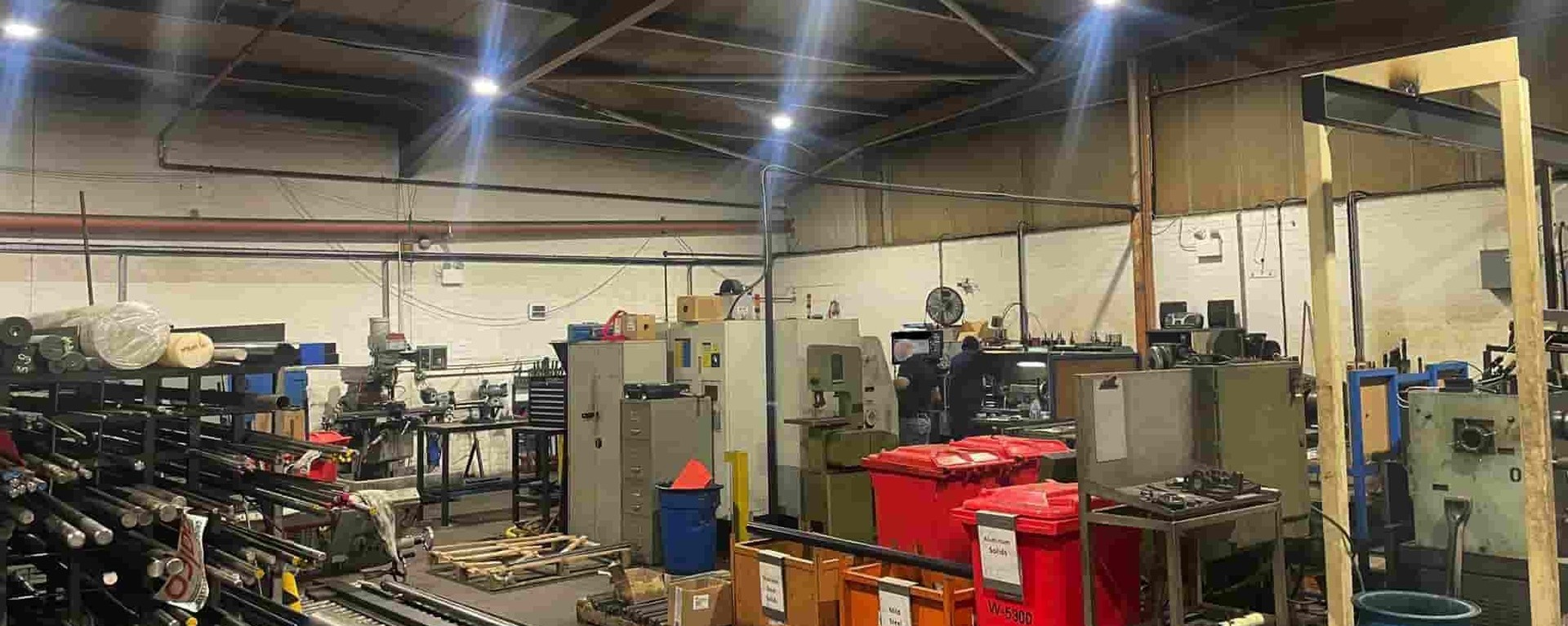Lighting high risk task areas
Posted on 15th July 2022
Lighting levels in high risk task areas must be correct.
MSE’s Corby-based engineering client wanted to refresh their older fluorescent lighting to provide suitable modern lighting conditions.
They needed to avoid downtime during the working week so the MSE team used a mobile elevated working platform (MEWP) on a Saturday so that the new, bright LED lighting was installed by the end of the day. The result – a major improvement in illumination for everyone on site.
Workplace lighting
Artificial lighting is needed in the modern workplace to minimise risks including slips, trips and falls in industrial areas and confined operational spaces. However, excessive lighting must be avoided because it can cause discomfort and dazzle people so they are unable to see potential hazards.
Poor lighting is a safety hazard because it can affect judgement about the position, shape or speed an object is moving which can lead to accidents and injury.
Good lighting is important to make sure detailed work can be completed accurately, safely and comfortably. It also help to maintain production and security and to keep your employees well and safe.
Lighting and health
Improvements in lighting conditions can result in as much as 10% productivity gains and 30% reduction of errors. Excessive or insufficient lighting, shadows, reflections, glare and flicker can all cause visual discomfort.
Poor workplace lighting, particularly when it causes glare, can result in eye strain, headaches, sore eyes, and aches and pains due to poor posture. Working in ‘darker’ workplaces can also make people feel sleepy and less alert, increasing the chances of an error or accident. Productivity and quality of work can also be affected.
Wherever possible natural daylight is the best choice for employee wellbeing but often this can’t provide adequate lighting across the whole working area or throughout the working day.
The level of natural and artificial lighting needed will depend on the type of work taking place. There are international lighting standards and recommendations for illumination of indoor and outdoor areas.
Recommended lighting levels
The amount of light needed will depend on the type of work being carried out. The design of your building might also affect the level of local lighting needed. Typically, light levels will be between 500 and 1,000 lux when measured 76cm or 30 inches above the floor. Generally, employees with a visual impairment will need extra light to complete their work.
Depending on how detailed the work recommended lighting levels will vary according to industry codes of practices (such as BS EN 12464-1) and the Society of Light and Lighting (SLL) Code.
Lighting design
A large warehouse with storage shelves and machinery which doesn’t have any windows will have different lighting requirements to a small open-plan office with several large windows.
Light patterns and shadows can affect how people perceive their workplace and colour rendering is also important when your employees need to see colours precisely. The reflectivity of walls and ceilings can also be important.
Installation considerations
Activities that create flammable, dusty and explosive atmospheres will need lighting that is protected from dust with minimal heat output. In some cases, your employees might benefit from controlling some or all of their local lighting.
Lighting control systems can range from simple switches to automated systems controlling individual lights or groups of lights. Control systems will need a ‘fail safe’ feature so that work areas don’t lose all lighting if there’s a problem with the system or power supply.
Share this post:





